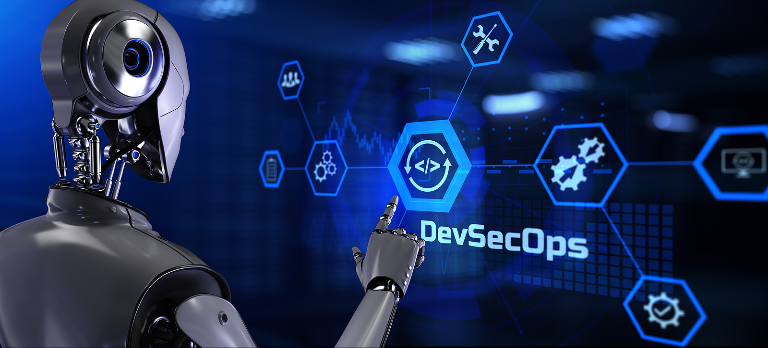Across the country, state and local agencies are rethinking how they protect children—both through technology and from it. Digital tools are helping caseworkers respond faster to abuse reports, coordinate across agencies, and keep kids safer in their communities. Yet those same agencies (and others) are facing a new kind of responsibility—safeguarding children from online dangers like exploitation, cyberbullying, deepfakes, and predatory behavior.
This dual challenge is shaping how governments design services, invest in modern infrastructure, and collaborate with law enforcement, schools, and nonprofits.
Modernizing Child Welfare
Across a number of states, departments serving children and families have implemented a wide variety of technologies to coordinate the response to and prevention of child neglect and abuse.
- In Los Angeles County, the Child Protection Hotline received over 220,000 calls annually, and its infrastructure struggled to keep up. A modern, cloud-based call center solution helped them streamline contacts, making it easier for families to connect with the services they need and improve processes for county workers.
- Connecticut’s modernization focus has been on enabling case workers to do more administrative work while in the field, removing the need for them to come into the office just to complete and submit paperwork or access files. Equipping workers to access data while in the field also supports better in-the-moment decision-making when they meet with families.
- By 2023, the Arizona Department of Child Safety had reduced the number of children in state care to the lowest level in 15 years—in great part due to smarter use of technology. In addition to integrating data silos into a more cohesive system, the department has also utilized AI to analyze large datasets, both to identify patterns that help prioritize cases and to flag potential risks early on. These changes mean that issues are much more often handled before they escalate to the point of needing to take a child into state care.
Expanding Tech Use Beyond the Classroom
The payoffs of investment in classroom technology have led many districts to expand their use of technology to operational areas. In the 2024-2025 school year, Kansas City Public Schools implemented a technology platform for their bus fleet. One key tool is a tablet near the dashboard that checks each kid on and off the bus. This is reported to an app that allows parents to see that their child made it to the bus and helps the school get a headcount on that day’s breakfast and lunch needs. Buses also have live cameras that can help with addressing student behavior issues. Other additions include software on the bus that monitors engine components, alerting transportation departments to maintenance needs.
Security is another key area where technology is helping schools become more efficient and effective. Monterey Peninsula Unified School District in California found that its aging system of IP cameras was not providing the quality of data needed to address security concerns. They moved to a cloud-based solution that allowed better access by a wide range of people who become first responders in a school environment. The digital camera technology provides more precise detection of threats, being able to distinguish between a vehicle, person or dog, and can trigger alerts for immediate action.
Monitoring the Impact of Technology
Increasingly, child welfare agencies are being tasked with protecting children from online threats, including trafficking, cyberbullying, and exploitation. A new California law requires companies that offer chatbots to institute specific safeguards to protect children. Key among these is monitoring chats for signs of suicidal ideation, then taking steps to prevent at-risk users from harming themselves, such as by referring them to outside mental health assistance. Chatbots will also have to remind users that responses are artificially generated and provide children with reminders to take breaks from using the tool.
To learn more about the impact of technology on child welfare, check out these resources from GovWhitePapers and GovEvents:
- Enterprise Architecture: A Guide to State Government Continual Transformation (white paper) – Enterprise architecture is more than an IT framework—it’s a strategic discipline that helps state governments manage complexity and drive ongoing transformation. NASCIO emphasizes the need for CIOs to treat enterprise architecture as a critical tool for navigating political, economic, and technological change. With the right structure in place, states can make smarter decisions, reduce costs, and deliver better outcomes for citizens.
- Evolution of Law Enforcement: Powered by Technology (white paper) – Law enforcement organizations are adopting AI-driven automation, cloud solutions, and integrated digital platforms to improve efficiency, compliance, and proactive crime prevention.
- Data to Decisions: How Agentic AI Is Transforming Government (white paper) – Agentic AI is a major evolution in artificial intelligence, moving beyond simple input-output models to systems that can interpret instructions, plan tasks and break them into steps, execute workflows, and adapt autonomously. Though adoption will require attention to security, trust, and oversight, the trend is clear—agentic AI is poised to transform government operations, and this report features insights from four experts on how agencies can use it to reduce manual work, accelerate insights, and respond more effectively.
- Public Sector CIO Summit (December 11, 2025; Reston, VA) – In the realm of government modernization, the United States grapples with the intricate task of updating its legacy systems to align with the rapid pace of technological advancement. This panel unpacks the multifaceted challenges inherent in this endeavor, spotlighting the delicate equilibrium between fostering innovation and adhering to budgetary and regulatory confines.
- IT Modernization Summit (December 11, 2025; virtual) – This virtual summit will bring together technology leaders from across higher education, as well as state and local governments, to explore the ongoing challenges they face while embracing IT modernization and digital transformation. Leaders will gather to discuss improving digital services, modernizing technology, embracing change, and developing a workforce to support future-ready growth.
Search GovWhitePapers and GovEvents to find even more insights on state and local technology use.










